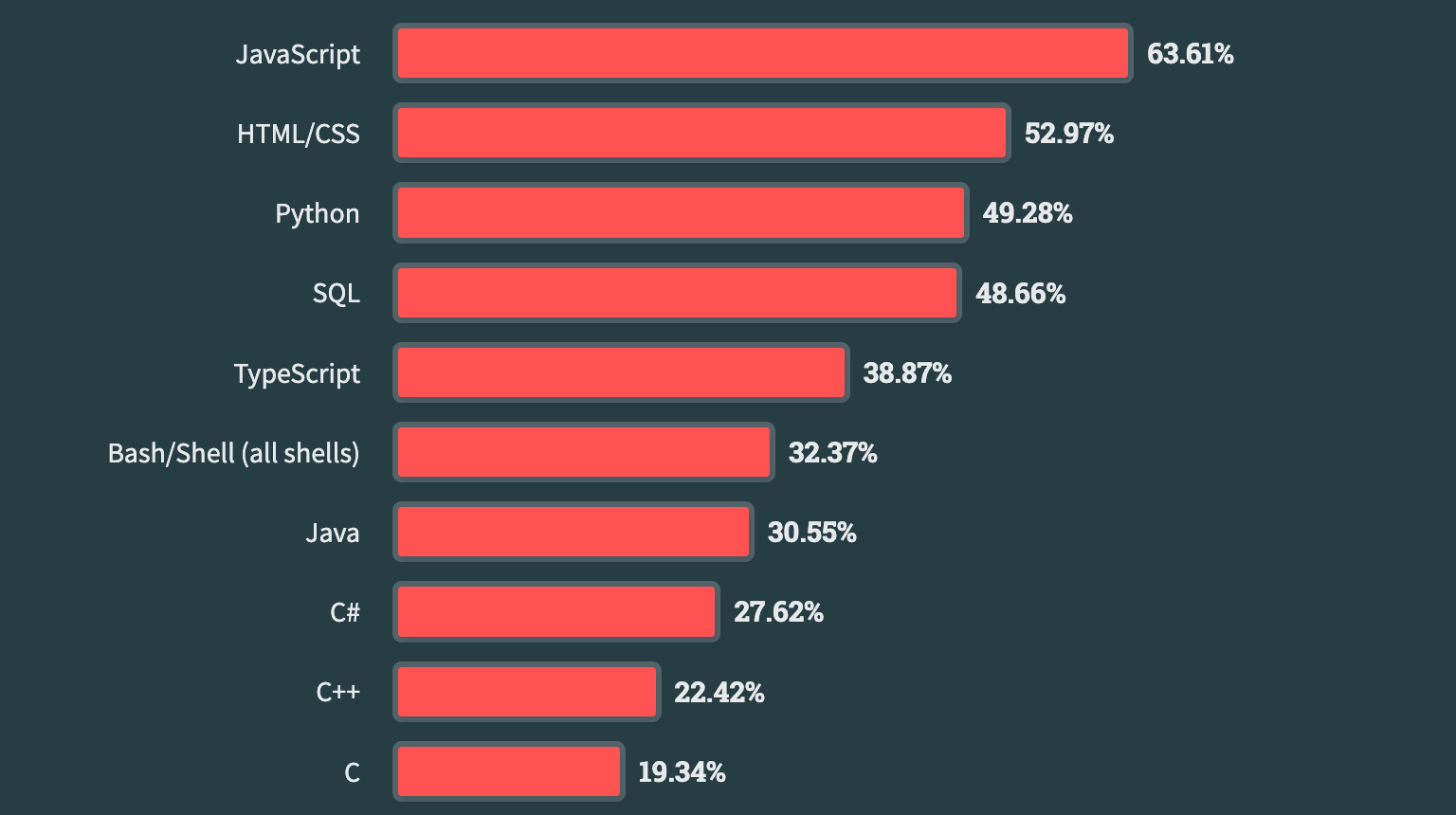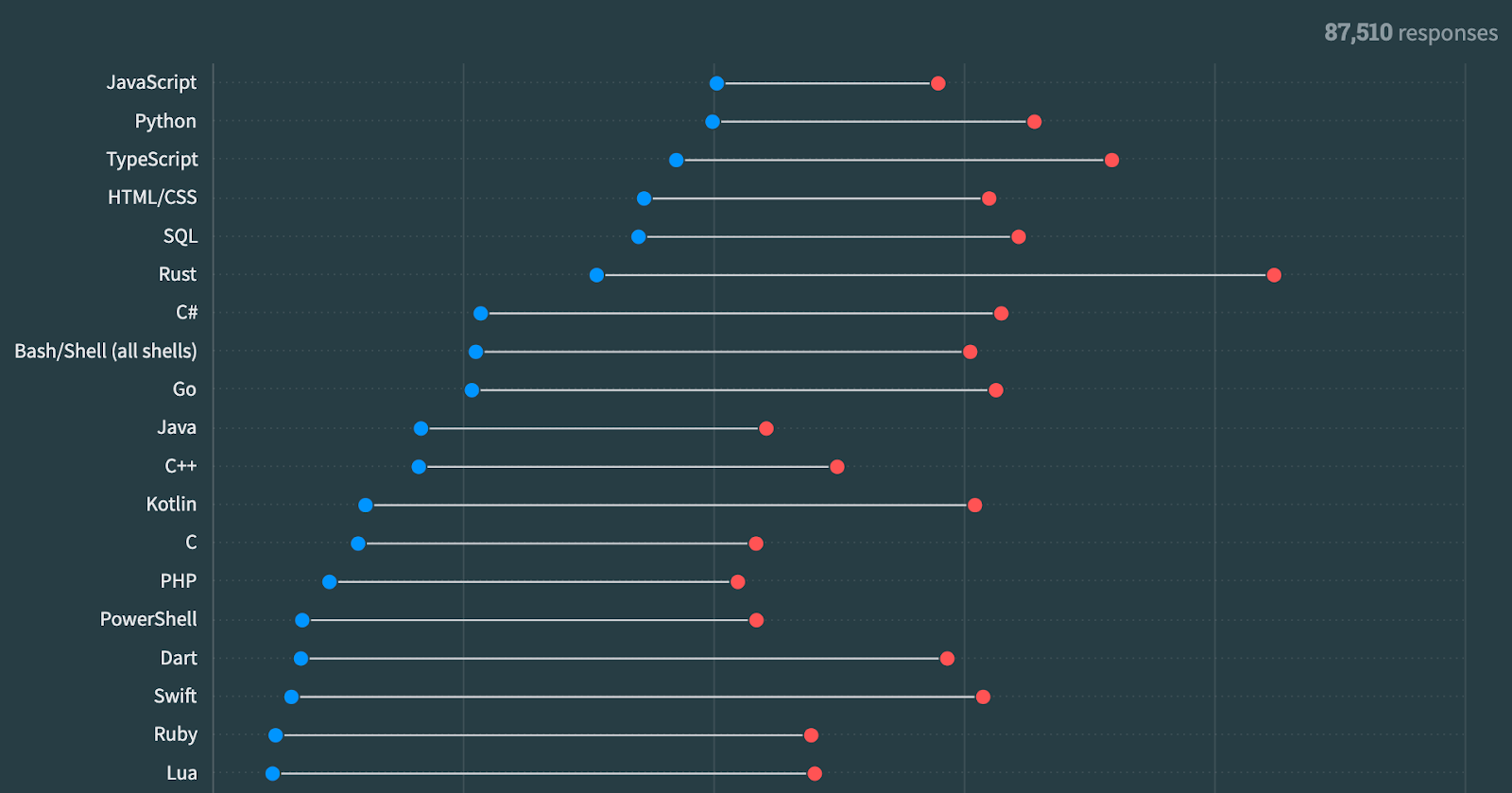Approximately 90,000 people from all over the world submitted their top picks for tools and programming languages they are using along with details about how long they have been coding at work, school, and otherwise. With such a large response to our 2023 survey, it’s good to keep in mind that our responses are sourced from our tried and true Stack Overflow audience, which means the results are biased towards a community of engaged coders that are actively solving problems. Check out all the new insights on our results microsite.
We also took a look at the real sentiments behind this year’s surge in AI popularity. Is it making a real impact in the way developers work or is it all hype? Head over to the blog post for a recap of the top insights, but check out Stack Overflow Labs for the deep dive details.
The times, they are a-changin’
For those that are very early or very late in their coding careers, or just prefer other methods of online learning besides Stack Overflow, it’s safe to assume we may be under-indexing those folks. Our top five key territories are the same as previous years with a slight shift in which countries are offering the top number of responses: the U.S. is consistently the number one country for responses, but this year we saw India drop from the second highest response rate to third place behind Germany. Over two years, we have seen the responses from India drop 50% while responses from Germany have grown by 30%. Indian developers taking the survey this year are skewing a little younger (89% under 34) compared to the age distribution of all respondents (62% under 34) so we may be missing responses from a segment of more experienced developers in India. Overall, the age distribution has moved slightly older this year with 37% of respondents aged 35 or older compared to 31% last year.
Among the top ten programming languages this year, we see three popular languages increase their standing: Python, Bash/Shell (all shells), and C.

We know from tracking tags on Stack Overflow that Python has been growing in popularity for the last three years, and this year it’s moved up one spot to take number three. Along with the rise in Python’s popularity, we consistently see Python libraries rank highly in our popular “Other technologies and frameworks” section—NumPy and Pandas have been in the top ten for the last three years.
C is an interesting language to see rise in popularity: it has not been in the top ten for programming languages in the Developer Survey before despite being around since the 1970’s. The TIOBE index has C as the second most popular programming language as of June 2023 and has engagement numbers close to their number one language, Python. Given that C is one of the most popular low-level languages, it’s the language of choice in embedded programming within IoT devices, and it “powers almost every technological experience we have” according to Codecademy, it makes sense that developers are using C more than ever this year.
The more popular a programming language is, the less experience on average we see reported from developers this year (around ten years for our top three languages, and closer to 14 years for those languages reporting less than 1% usage). Less experienced developers reporting higher usage of some programming languages possibly strengthens the argument that a lower barrier of entry into the job force increases their popularity among coders.
Overall, the baseline for salary growth in 2023 was 10% over last year. When controlling for comparable years of experience, we see a wide range of growth and decline amongst the programming languages (as much as 42% growth and 69% contraction year-over-year). If we take a language’s popularity as a proxy for prevalence of developers in the labor market, then we could assume that salaries for popular languages will fall and less popular ones will rise. Our top three most popular languages—JavaScript, HTML/CSS and Python—all saw negative growth in median salary (ranging from 5-10% contraction) while the three least popular languages we can match to comparable experience—APL, Crystal and SAS—we see even less salary growth (ranging from 8 to 80% contraction). But if we look at the same languages but adjust for less than average experience (for example, 5 years less experience than average per programming language), we see marginal growth for our top three and double-digit growth for APL and Crystal (SAS was filtered from the results for not having enough responses). What we surmise is that developers’ negotiating power has been affected this year and those with a few less years of experience and working in more niche languages have more salary upside this year than developers with more experience in more popular programming languages.
Get inspired by technologies admired and desired
This year, we added a new section to the survey results for technology trends for those who have used or want to use programming languages, tools, environments, libraries, etc., that we have dubbed “Admired and Desired”. Developers discover new technologies via Stack Overflow or their network, blogs, online forums, etc., and based on preliminary research, would like to try them out. Once a developer has had a chance to try said technology out, how many of them would still want to use it?
To better gauge hype versus reality, we created a visualization that shows the distance between the proportion of respondents who want to use a technology (“desired”) and the proportion of users that have used the same technology in the past year and want to continue using it (“admired”). For those with wide distances between them (and the admired metric remaining on the larger end of the scale), we can infer that momentum generated by the hype grows with hands-on use. With shorter distances, we can infer that the hype is doing much of the heavy lifting as far as general popularity is concerned. For example, we can see JavaScript, ranked as most popular programming language since 2011, has a relatively short distance between admired and desired (<10 percentage points), while Rust, a top choice for developers who want to use a new technology for the past eight years, shows a wide distance (>60 percentage points); Rust is a language that generates more desire to use it once you get to know it than JavaScript. Seeing this growth in admiration for certain technologies gives us insight into what has staying power and what needs help in order to generate coveted evangelists to convert new users into ones that will stick around.

Do admired technologies equate to financial security, as well? The top admired programming languages (>70% who have used them in the past year want to continue using them)—Rust, Elixir, and Zig—all have 20% or more higher salaries than the overall median developers in 2023 (roughly $75K annually). There is certainly not a direct correlation between salaries and the admiration factor since we see Python, TypeScript, and HTML/CSS all have admiration scores above 60% but only make marginally better annual salaries than the overall median. Perhaps part of the devotion to some of these popular and admired programming languages is the confidence developers attain by having that lower barrier to entry mentioned earlier; programmers can become sufficient and hired with less experience and get the benefit of so many online resources and Stack Overflow answers to help continue their learning process.
We have a video where we take you through our favorite highlights from the 2023 Stack Overflow Developer Survey. We started out trying to make this a 10-minute video, but we had so much to share…check it out here.
